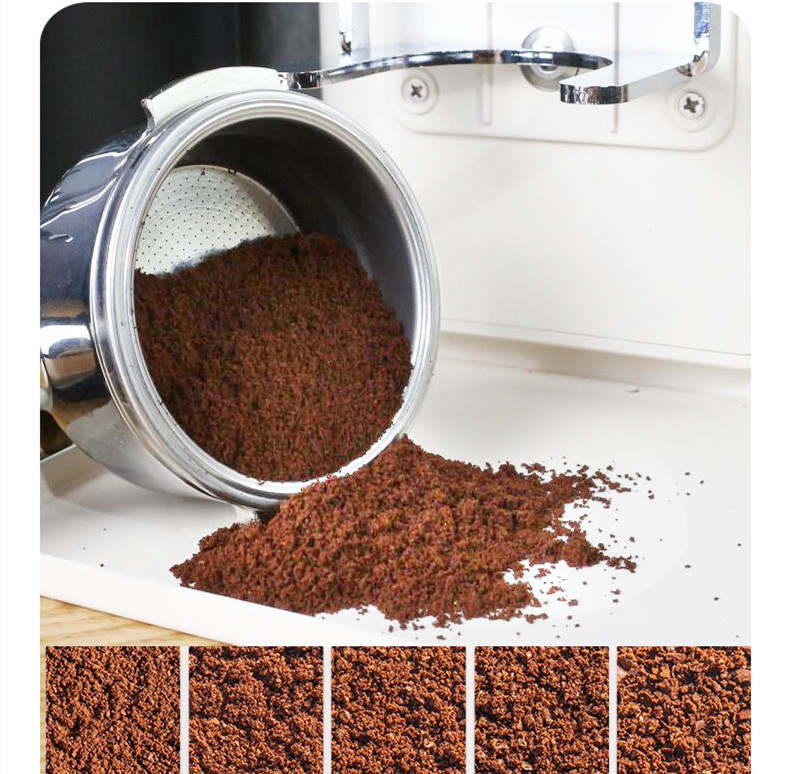Managing Excessive Heat in Coffee Grinders: Practical Solutions
Excessive heat during coffee grinding can degrade bean quality, damage internal components, and create safety hazards. Overheating often stems from friction, prolonged use, or inadequate maintenance. Below, explore actionable strategies to reduce heat buildup and protect your grinder’s performance.
Understanding the Causes of Overheating
Identifying the root cause of heat generation is the first step toward effective mitigation. Common factors include motor strain, improper grind settings, and environmental conditions.
Motor Strain from Continuous Use
- Impact: Grinding beans continuously for more than 5–10 minutes forces the motor to work harder, increasing friction and heat. This is common in commercial settings or when brewing for large groups.
- Signs: The grinder’s exterior feels unusually hot to the touch, or it emits a burning smell.
- Solution: Limit grinding sessions to 3–5 minutes at a time, allowing the motor to cool for 5–10 minutes before resuming. For high-volume needs, consider staggering batches or using multiple grinders.
Incorrect Grind Settings for Bean Type
- Impact: Using a setting too fine for oily or dense beans (e.g., dark roasts) creates excessive resistance, causing the burrs to generate friction and heat.
- Signs: The grinder slows down, struggles to turn, or produces uneven particle sizes.
- Solution: Adjust the grind coarser to reduce resistance. For espresso, experiment with slightly larger settings (e.g., moving from “fine” to “medium-fine”) to balance extraction and heat.
Poor Ventilation or High Ambient Temperature
- Impact: Grinders placed in enclosed spaces, near ovens, or in direct sunlight retain heat more easily. Dust-clogged vents also restrict airflow, trapping warmth inside.
- Signs: The grinder’s body remains hot long after use, or the motor sounds labored.
- Solution: Relocate the grinder to a cool, well-ventilated area. Use a can of compressed air to clean dust from vents and motor housing monthly.
Immediate Actions to Cool Down an Overheated Grinder
If your grinder is already hot, take these steps to prevent damage and restore functionality.
Power Off and Unplug the Grinder
- Safety First: Turn off the grinder and unplug it from the outlet to avoid electrical hazards or accidental activation.
- Wait Time: Let the grinder sit idle for 15–30 minutes, depending on how hot it feels. Avoid touching metal components, as they retain heat longer.
- Check for Damage: Once cooled, inspect the motor, burrs, and wiring for signs of melting or discoloration. If found, discontinue use and consult a professional.
Improve Airflow Around the Grinder
- Positioning: Move the grinder away from walls, cabinets, or other appliances that block airflow. Ensure at least 6 inches of clearance on all sides.
- External Cooling: Use a small fan to blow air across the grinder’s body (avoid directing air into vents, as this can push dust inward).
- Avoid Ice Packs: Never place ice packs or cold towels on the grinder, as rapid temperature changes can cause condensation and internal corrosion.
Reduce Grind Size or Batch Volume Temporarily
- Adjust Settings: Switch to a coarser grind setting to minimize friction. If brewing espresso, accept a slightly faster shot time to avoid overheating.
- Batch Control: Grind smaller amounts (e.g., 10–15 grams for a single cup) instead of filling the hopper to capacity. This reduces motor load and heat accumulation.
Long-Term Strategies to Prevent Overheating
Incorporate these habits into your routine to maintain optimal grinder temperatures and extend its lifespan.
Regular Maintenance of Burrs and Motor
- Burr Cleaning: Use a soft brush to remove coffee oils and particles from the burrs after each use. Oily buildup increases friction, which generates heat.
- Motor Dusting: Every 3–6 months, use compressed air to blow dust from the motor’s cooling fins and vents. Clogged fins restrict airflow, leading to overheating.
- Lubrication (if applicable): Some grinders require periodic lubrication of moving parts. Check the manual for guidelines, as improper lubrication can attract dust.
Optimize Grinding Schedule and Environment
- Time Management: Avoid grinding back-to-back batches. Schedule breaks between sessions to let the motor cool naturally.
- Ambient Control: Keep the grinder in a room with stable temperatures (60–75°F or 15–24°C). Use a dehumidifier if humidity exceeds 60%, as moisture can exacerbate heat retention.
- Peak Hours: If operating a café or office kitchen, stagger grinder use during busy periods to prevent prolonged operation.
Upgrade Grinding Techniques for Efficiency
- Pre-Weigh Beans: Measure beans before grinding to avoid overfilling the hopper. Excess beans increase the time the motor runs, raising heat levels.
- Pulse Grinding: For manual or low-speed grinders, grind in short bursts (2–3 seconds) followed by pauses. This allows heat to dissipate between pulses.
- Use Fresh Beans: Stale beans are drier and harder, requiring more energy to grind. Fresh beans (roasted within 2–4 weeks) grind more easily, reducing motor strain.
By addressing overheating through immediate cooling, regular maintenance, and strategic usage, you can protect your coffee grinder from damage and ensure consistent, high-quality results. Prioritize safety, monitor temperature cues, and adapt your approach based on the grinder’s behavior and environmental conditions.


